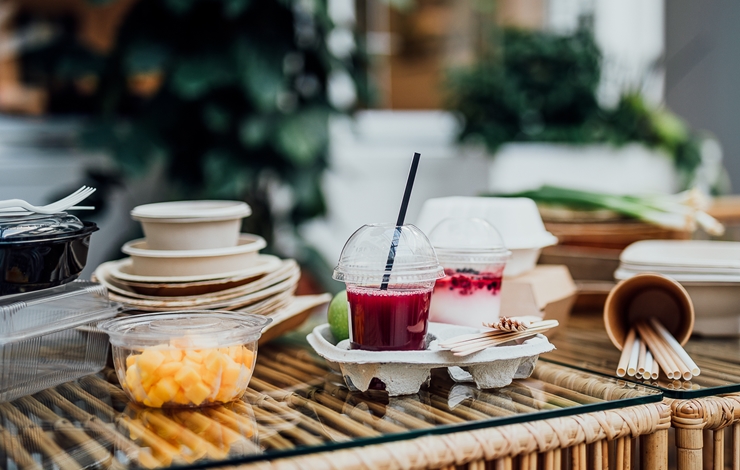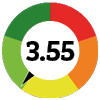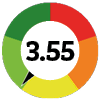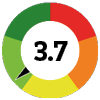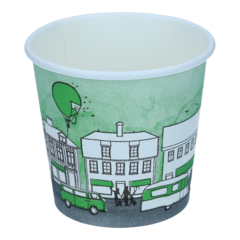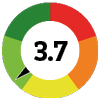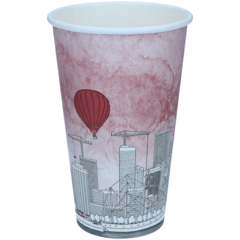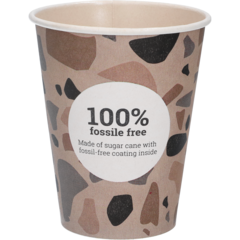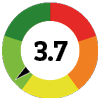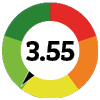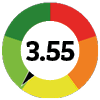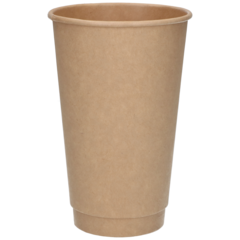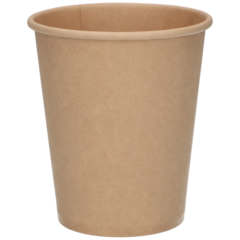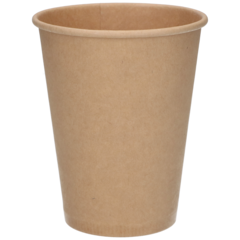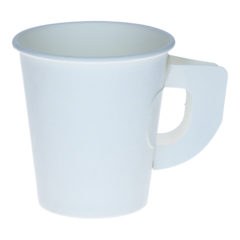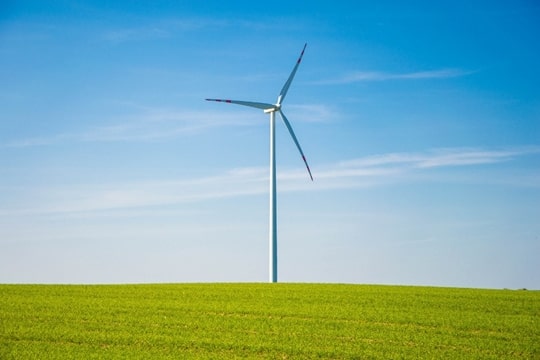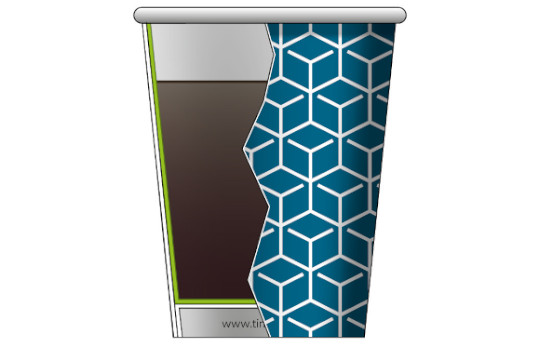
What does a paper cup consist of?
A paper cup consists of two main components:
- Paper: Approximately 90% of a paper cup is made of paper. It is manufactured from wood fiber that may come from forests or recycled paper. The paper is usually made from virgin fiber to ensure hygiene and food safety. An increasing number of paper cups are made from paper sourced from certified forests, ensuring responsible and sustainable forestry.
- Coating (
 ) : On the inside of the cup, there is a thin waterproof coating that prevents liquid leakage. The coating can be made of PE (polyethylene), a fossil-based raw material, or plant-based materials that are fossil-free. Examples of fossil-free coatings include PLA (corn starch) or green PE (sugar cane).
) : On the inside of the cup, there is a thin waterproof coating that prevents liquid leakage. The coating can be made of PE (polyethylene), a fossil-based raw material, or plant-based materials that are fossil-free. Examples of fossil-free coatings include PLA (corn starch) or green PE (sugar cane).
The development of new materials is advancing, and today there are also paper cups made of 100% paper.
Paper cups can be manufactured with one or two layers of paper. A single layer is the most common type of paper cup and is cost-effective to produce. Double walls are more expensive, but they provide better heat insulation. At Tingstad, you can find both single-layer and double-layer paper cups.
Questions and Answers about Paper Cups
Can paper cups be recycled?
Recycling paper cups helps reduce environmental impact. By recycling paper cups, we can reduce the amount of waste going to landfills or incineration.
Which type of paper cups is the most environmentally friendly?
Other eco-friendly options include paper cups made from plant-based raw materials, such as bagasse, cornstarch, or sugarcane.
You can also choose paper cups with a coating made from renewable or fossil-free resources. Examples of fossil-free coatings are PLA (cornstarch) or green PE (sugarcane).
In addition to choosing the type of paper cup, we also recommend encouraging guests to recycle the paper cup after use. Recycling a paper cup reduces the carbon footprint by approximately 50%, according to a study conducted by the VTT Technical Research Centre of Finland.
What challenges exist with paper cups from a sustainability perspective?
- Material: Paper cups are typically made of wood fiber and a waterproof coating. The waterproof coating is often made of fossil materials, such as polyethylene (PE). Fossil materials are not renewable and contribute to climate change.
- Recycling: Paper cups are recyclable, but most paper cups do not end up in recycling. In Europe, the average recycling rate for paper cups is 36%. This is because paper cups are often mixed with other waste, such as food residues, making them difficult to recycle.
There are three possible solutions to the challenges above:
- Use products made of 100% paper.
- Use products with coatings made of fossil-free materials. There are many different plant-based materials that can be used for a waterproof coating, such as cornstarch and sugarcane. These materials are renewable and do not contribute to climate change.
- Ensure that paper cups can easily be collected for recycling. This can be done by improving collection systems for paper products, such as installing more recycling stations and making it easier to separate paper cups from other waste.
There is currently an exciting development in the industry with new materials and recycling possibilities. For example, new plant-based materials that are even more sustainable than existing ones are being developed. There are also new recycling methods that make it easier to recycle paper cups.

Labeling requirements for cups
According to the EU Single-Use Plastics Directive, it has been decided to introduce labeling requirements for single-use products that are wholly or partially made of plastic. This includes, among other things, cups. The labeling requirement came into effect in July 2021.
Author: Tingstad
Last Updated: 2023-12-18
YOU MAY ALSO BE INTERESTED BY
Material guide.
It is important for us to help our customers make informed decisions. Therefore, we have developed a material guide to make it easier for you as a customer.
A more sustainable choice.
To take environmental responsibility is too many companies more important than ever. For us who work in an industry that takes on the resources of nature, the commitment to our world today and in the future is something we have with us in everything we do. Here you will find products that either have eco-labeling or which meet established environmental requirements from a control organization.

